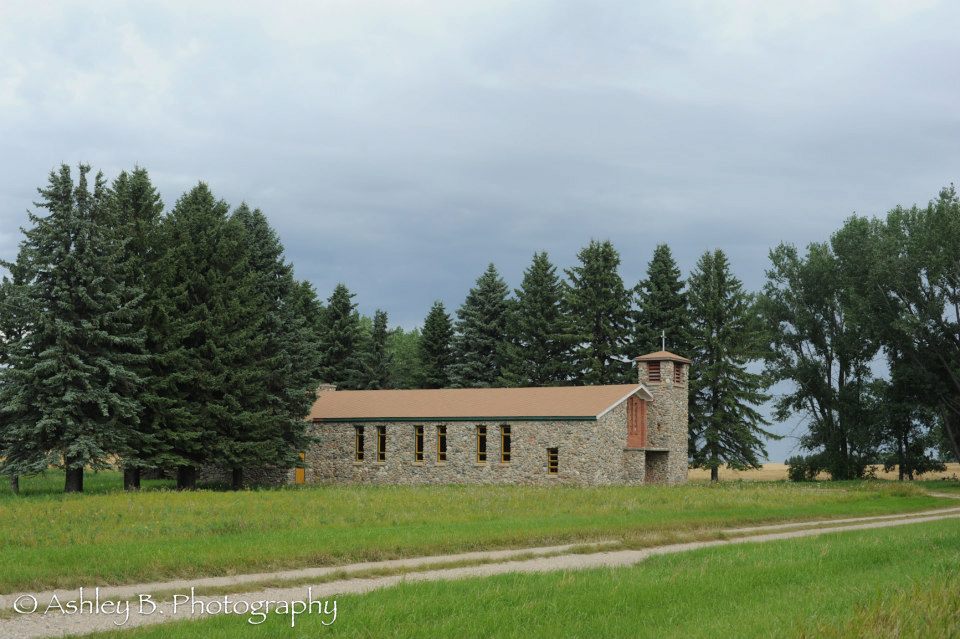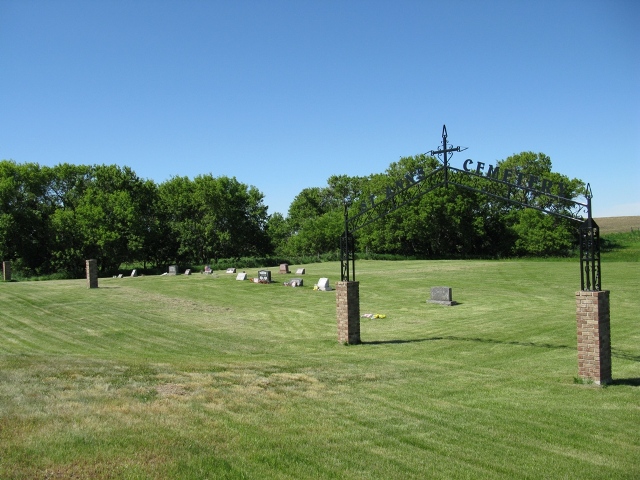
Atlas of Benson County, 1910 Plat Map
Fillmore was first founded in 1904 as a stagecoach stop a half mile south of this now-ghost town (save for one full-time resident). The stagecoach delivered mail and passengers between Knox and Esmond.
Eight years later, Fillmore graduated to a train stop along the Soo Line, which was laid in 1912. In 1950, Fillmore had a population of about 95 people, which was bigger than nearby Harlow, a town of just 90 people. It’s said that at its peak, Fillmore was home to 150 people. Most people made a living through farming or working with the railroad. It was named by those who had initially immigrated to Fillmore County, Minnesota, which was named for former U.S. president Millard Fillmore, and who later came to North Dakota.
Over the years, the town was served by a depot, a bank, two grocery stores, a hotel, a café, two bars, an implement dealership, Lutheran and Catholic churches, a blacksmith and mechanic shop, gas stations, a barbershop, a hardware store, stockyards, and three elevators.
Until the middle of the 20th century, area children were educated in a four-room schoolhouse that taught 1st through 12th grades, and the school bell can still be heard on the bell-tower at Niewoehner’s Funeral Home in Rugby, North Dakota. A spirited community, Fillmore also had a town baseball team that competed against other legion teams in the area and, in the 20s and 30s, a band that performed all over the state.
Check out Ghosts of North Dakota.com for photos of present day Fillmore.
Mildford Stangeland and Peter Anderson
According to Hiram Drache in his book "The Challenge of the Prairie" early
settlers found one of their biggest problems in the wind swept lands of Benson
County was snow storms. Dakota settlers experienced severe winters during the
1870's, 80's and 90's and soon discovered that it was more economical to buy
coal or to import cordwood from the forested areas of Minnesota rather than to
cut and haul their own from the scattered groves along the rivers and streams.
It had its disadvantages as Milford Stangeland and
Peter Anderson, who farmed near Fillmore found out during the winter of
1882-83 when they went Esmond, twelve miles from their homesteads to buy coal.
There was no coal available in Esmond so they were forced to drive all the way
back and then go to Pleasant Lake, thirteen miles north of Fillmore. At Fillmore
others searching for coal joined them for the trip to Pleasant Lake. They found
coal but on the way home they were caught in a blizzard and became lost. The
horses seemed to know where to go so the drivers dropped the reins and the
horses found the way home.
Lester J Rendahl- Oral History
Tape #48B and 49A Lester J. Rendahl (Fillmore)
000 – Introduction
018 – Lester’s family comes to North Dakota
071 – Nationalities in the area
083 – Lester’s mother’s homestead shared with brother Bert, his father’s
homestead
089 – Area towns
104 – Lester’s mother’s first home she built with her brother Bert
114 – Parents opinion of the country
123 – Early homesteaders in the area
132 – Lester’s mother again, his brothers and sisters
150 – The town of Esmond
160 – Prairie fires, no water shortage
168 – Fuel in the area
176 – The town of Fillmore
181 – Lester’s birth and early education of himself and a brother
220 – Early businesses in Fillmore
280 – Social life of the area
375 – Family size in the “old days”
381 – Contentment of the people “back then”, Lester’s firm resolve to farm
415 – NPL in the area
445 – Businesses decline in the area
458 – Fillmore/Baker competition for business and the electric co-op
500 – Baseball teams of the times
514 – Churches center for some social life
546 – Lester’s return to the farm after his college years, his early years back
on the farm
612 – Farms disappearing from the landscape, size of the farms “then and now”
663 – Worst years of the 30’s, people generally good tempered
721 – Lester’s opinion of Bill Langer and FDR
757 – End of tape
Tape #49A
001 – Introduction and explanation of interviews on both sides of the tape
016 – Businesses in and around Fillmore
025 – Syrians around Fillmore, their acceptance in the community
043 – Credit on Lester’s father’s Farm Implement Store books during the 30’s
063 – Lester’s time threshing in and around Fillmore
092 – Farm Holiday Association around Fillmore, radicals passing through the
area
136 – A change of opinion of Bill Langer, Lester decides to become a Democrat,
local politics
192 – Some reasons for farmers leaving the area
211 – Hobos in the Fillmore area
224 – Wind damage to farmland, farm programs which came out of FDR’s government
that have helped the farmers
253 – The attitude of people today, Lester is an armchair philosopher
351 – Coal development in Western North Dakota
379 – Lester’s attitude of North Dakota, a booster for the state
411 – Lester’s opinion of Jimmy Carter and his mandates, discussion of the other
presidential candidates
448 – People seem to be generally more cynical about politics today, Lester’s
opinion of the CIA and its operating procedures
524 – End of interview

St. Ann's Catholic Church
 St Ann's Cemetery |
 Fillmore Lutheran Cemetery |
|||
|---|---|---|---|---|
|
GPS Coordinates: Latitude: 48.17390, Longitude: -99,80530 |
Located 1/2
mile west of the Fillmore townsite on the county road (53 Street NE) |
If you wish to submit or correct data for this county, please contact
Colleen Goltz
Benson County Coordinator
If you have problems with this site, contact the State Coordinator or Assistant State Coordinator for the
NDGenWeb Project